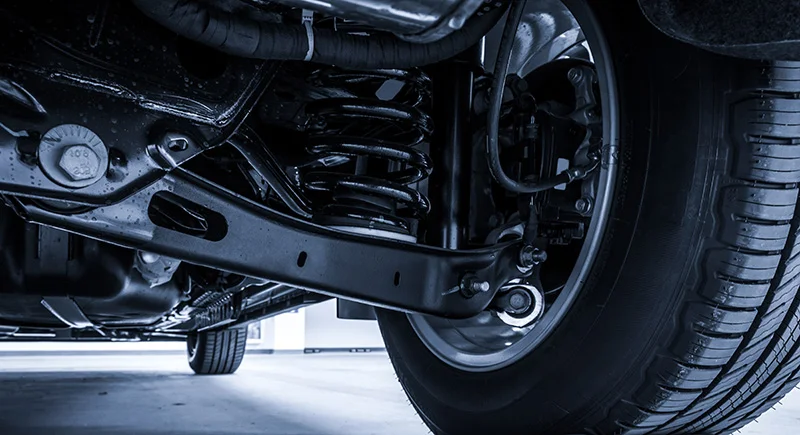When you need to stop your car in a hurry, you instinctively trust the brake system to do its job. However, your brakes are only half of the stopping equation. The other half is your suspension. This often-overlooked system plays a vital role in ensuring your car can stop safely and efficiently. A healthy suspension is what keeps your tires firmly on the ground, and without that critical contact, your braking distance can increase dramatically.
The Core Job of Your Suspension
Your vehicle’s suspension system—which includes shocks, struts, and springs—does more than just give you a comfortable ride. Its primary function is to maintain maximum tire-to-road contact at all times. It absorbs bumps, smooths out rough roads, and manages the car’s weight. Therefore, it ensures that your tires can grip the pavement, which is the foundation of all vehicle control, including braking.
The Critical Connection During Braking
Braking is not just a matter of friction; it’s a dynamic process that involves significant weight transfer.
- Weight Shift: When you hit the brakes, the car’s weight shifts forward. A healthy suspension manages this forward lurch. It keeps the front end from diving too aggressively and ensures the rear wheels stay in proper contact with the road.
- The Consequences of a Failing Suspension: A worn-out suspension allows the car to “nose dive” excessively. This rapid shift in weight unloads the rear tires, significantly reducing their traction. Consequently, the rear brakes become less effective, and the entire burden of stopping falls on the front wheels.
- The Result: The car’s overall braking power is severely compromised. A car with worn shocks or struts can have a stopping distance that is 20% to 30% longer than a vehicle with a healthy suspension. That can be the difference between a safe stop and a serious collision.
Common Signs of a Worn-Out Suspension
A bad suspension doesn’t always announce itself with a sudden failure. Instead, it often presents subtle but dangerous symptoms.
- Excessive Bouncing: After hitting a bump, does your car continue to bounce? A healthy suspension will absorb the impact and settle almost immediately.
- Nose Diving: When you brake, does the front of your car lurch forward dramatically? This is a classic sign of worn shocks or struts.
- Uneven Tire Wear: A failing suspension can cause uneven pressure on your tires, leading to bald spots or cupping.
- Poor Steering Control: If your car feels like it sways or leans excessively on corners, your suspension is not properly managing its weight.
Beyond Braking: The Impact on Safety and Components
A healthy suspension system is an essential partner to your brakes. It ensures that the braking force is properly applied to the road. Furthermore, neglecting your suspension can lead to increased wear on other parts of your car, including your tires and braking components, which leads to more costly repairs down the road.
Conclusion: Brakes and Suspension, a Team Effort
In conclusion, your car’s brakes and suspension work together as a team. Brakes create the stopping force, but the suspension allows them to perform effectively by ensuring your tires have a consistent grip on the road. Therefore, proactive maintenance of your suspension system is just as vital as changing your brake pads. By keeping both systems healthy, you are making a critical investment in your vehicle’s safety and performance.




